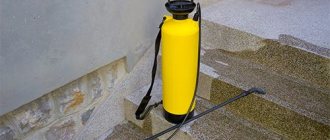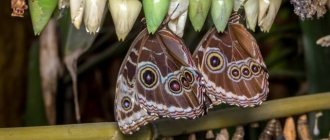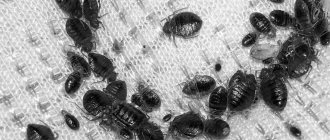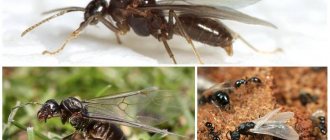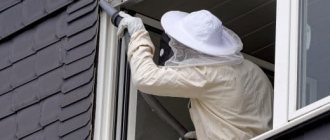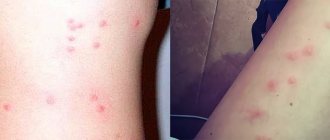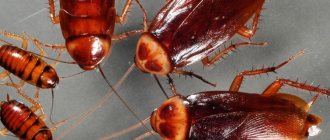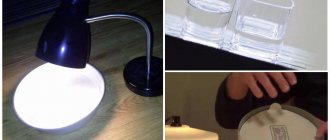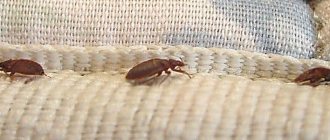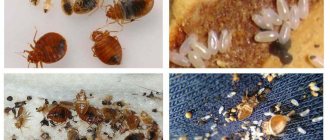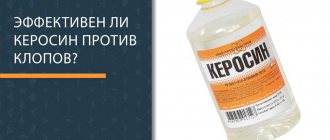The term “disinsection” has been used for quite a long time, since 1990, when the bacteriologist Nikolai Fedorovich Gamaleya proposed using it to refer to measures to destroy insects that carry dangerous infectious diseases. Currently, the meaning of this term is somewhat broader, since it includes not only destruction, but also preventive actions aimed at preventing the subsequent appearance of insects on the site.
Thus, a modern interpretation of the definition may be as follows: disinfestation is a combination of organizational, sanitary-technical, sanitary-hygienic and extermination procedures that are aimed at eliminating arthropod carriers of dangerous human diseases, as well as creating conditions that negatively affect their life and spread .
What is the role of arthropods in the spread of infectious diseases?
Among arthropods there can be both beneficial specimens and pests. Most of the insects from this large order not only damage gardens, crops, food supplies, clothing, and furniture, but also carry pathogens of dangerous diseases. In addition, among arthropods there is a large group of insects that live next to humans and cause him a lot of trouble - these are bedbugs, fleas, and mosquitoes. The appearance of flies and cockroaches demonstrates that an unfavorable sanitary environment has been created in homes, offices, and workplaces.
In order to understand how to effectively deal with various types of insects, you need to know what harm they can cause to humans and what their favorite indoor habitats are:
- flies prefer places where they can feast on food waste - landfills, compost heaps, stables, barns and others. In this regard, they can become carriers of intestinal diseases, pathogens of tuberculosis, cholera, etc. In addition, with their bites they can cause a lot of trouble, both to humans and animals;
- dust mites - their favorite places in the apartment are the bed, furniture upholstery, fleecy surfaces. Their appearance in the house can cause allergic reactions in a person and can lead to serious diseases such as bronchitis and ulcers;
- cockroaches - most often live where there is high humidity and there is sufficient food waste. They cause a lot of unpleasant moments for a person. In addition to the fact that the very fact of the appearance of longhorned beetles in an apartment does not cause delight, they are also carriers of intestinal diseases, cause allergic reactions, and sometimes bite people;
- lice – live in human hair and cause pediculosis;
- fleas - in most cases they are found under baseboards, in carpet pile, and in animal fur. They painfully bite pets, and sometimes people; when bitten, they can transmit not just dangerous, but even fatal diseases, and carry helminth eggs;
- Pharaoh ants - inhabit basements, ground floors, and move along ventilation ducts. They spoil food, leave their waste in the corners of rooms, and carry pathogenic bacteria;
- bedbugs prefer to live and reproduce in human beds and all sorts of crevices. They disturb a person’s restful sleep, their bites cause severe itching, sometimes accompanied by allergic rashes, headaches, and nausea.
Due to the numerous conditions in which unwanted insect exposure occurs, different approaches to pest control procedures are required.
What infections do insects carry?
In nature, there are dozens of species of insects whose food is the blood of warm-blooded animals and humans. These are fleas, bedbugs, lice, mosquitoes, horseflies, ticks, etc.
There are also insects that, although they do not bite, carry numerous infections . These are flies and cockroaches.
Neighborhood with such insects can result in serious problems : from allergic reactions to deadly diseases.
Next, I’ll tell you in a little more detail what diseases the listed insects can infect humans with.
- Fleas:
dermatitis (simple and allergic) – inflammation of the skin; - brucellosis – multiple lesions of body systems (respiratory, cardiovascular, digestive, etc.);
- encephalitis - inflammation of the brain substance;
- tularemia – severe intoxication (poisoning) of the body + damage to the lymph nodes;
- other diseases.
- toxoplasmosis – especially dangerous for pregnant women (the central nervous system of the fetus is affected);
- dermatitis;
- tick-borne encephalitis – damage to the spinal cord and brain;
- dysentery - acute intestinal infection;
- all types of intestinal infections;
- dermatitis (simple and allergic)
The listed diseases, which are carried by insects, are a good reason for regular disinfestation in places where people live or where people are in large numbers.
Types of pest control
There are two main types of disinfestation:
- Preventive – carried out with the aim of creating situations in which insects will not be able to exist and reproduce. This type of disinfestation is carried out in institutions for various purposes - hotels, schools, medical organizations, sanatoriums, tourist centers, catering organizations. Preventive disinfestation involves a whole range of different activities. This includes systematically changing and washing bed linen using high temperatures, conscientiously cleaning all residential and office premises, putting the surrounding areas in order, cleaning sewer channels, installing grilles on ventilation ducts, and hermetically sealing cracks and crevices. It is possible to install special boxes with an adhesive plate - bait inside. Such devices help determine the presence of insects on an object, because several individuals are sure to fall into such a trap. If such a situation occurs, then preventive disinfestation turns into exterminatory.
- Extermination - carried out on those objects where a very large number of insects live. The purpose of this type of disinsection is the complete destruction of arthropods, as well as their nests. Depending on how heavily an object is infested with insects, methods of combating them are chosen. Exterminatory disinsection consists of focal - this is the extermination of nests with eggs and larvae and the adult pests themselves, and final - this is the destruction of the hardiest, surviving members of the colony, as well as the offspring hatched from the eggs. After this, a special barrier is installed, which helps to promptly identify and, as quickly as possible, eliminate secondary contamination of the area.
What is disinfestation: concept and types
Disinsection involves repelling or completely destroying insects in an apartment or public place, as well as preventive actions aimed at preventing the appearance of pests. As a rule, not only the premises themselves (floor, ceiling, walls, ventilation), but also the things and objects inside, for example, furniture, mattresses, are subject to disinfection. Pets and indoor plants are treated separately.
Classification
Insect disinfestation is carried out in residential and public buildings using chemicals. Disinfection can be classified according to various criteria: place, time of implementation, method of exposure. Large spaces - medical, educational institutions, markets, hangars, livestock pens - are treated by specialists with professional poisons. The owner alone can cope with the problem at home using available means.
All types of disinfestation, regardless of classification, are divided into two large groups.
- Fighter. Colonies of harmful arthropods are directly destroyed.
- Preventive. Disinsection is carried out with the aim of creating unfavorable conditions for the appearance and reproduction of parasites.
Frequency
Any premises, including transport, are disinfected as planned. According to the requirements of SanPiN (3.5.2.1376-03), the frequency of disinfestation depends on the purpose of the object. Markets and public food places are surveyed two to four times a month. Educational and children's institutions, economic facilities - twice a month. All other premises are disinfected monthly.
If public and municipal buildings are required to undergo inspection, inspection and disinfection, then the owners monitor the condition of the apartment themselves. Of course, it is better to carry out “planned” prevention than to deal with a problem that has already arisen. To prevent the appearance of pests, it is enough to do wet cleaning weekly, change the bedding, steam mattresses, and dry pillows. It is necessary to monitor the condition of floors, windows, ventilation, and immediately eliminate cracks.
Constant protection will be provided by repellent aromas. For example, you can periodically carry out wet disinsection by spraying a solution of ammonia, vinegar, or tar soap. Many insects cannot stand the spirit of fragrant plants - wormwood, tansy, chamomile, mint. You can use both dried herbs and essential oils.
Residents of the lower and top floors should pay special attention to preventive spraying of apartments with chemicals. It is from the basement and attic that ticks, cockroaches, and fleas most often come to visit.
Utility and housekeeping services monitor the safety and cleanliness of the house. If for some reason hygiene standards are not observed, and ants or bedbugs live freely in the apartments, you should contact the SES. Disinsection is the direct responsibility of the sanitary and epidemiological service.
Frequency of disinfestation
There are a number of regulations that establish requirements for disinfestation in premises. The main documents are:
- Sanitary and epidemiological requirements approved by the Resolution of the Chief State Doctor of the Russian Federation.
- Requirements for organizing and carrying out disinsection activities against synanthropic arthropods.
- SanPiN standards.
According to the provisions of the Sanitary and Epidemiological Rules in industrial premises that are of particular epidemiological significance, disinsection should be carried out once a month. The list of such objects is given in a separate paragraph of the Rules.
In other cases, disinsection is carried out for sanitary, hygienic and epidemiological reasons. Consequently, the regularity of this procedure is established by the real need for its implementation:
- For trade and food industry enterprises infested with insects, control checks must be carried out 4 times a month. For uninfected people – 2 times a month;
- in children's educational, medical and preventive institutions, schools and public utility facilities - 2 times a month;
- for other objects – once a month.
Inspections are carried out by a specially trained employee or services that offer pest control services.
The premises are considered free from pests if they are absent from the premises for a certain time:
- bedbugs, flies – more than 30 days;
- cockroaches, fleas, ticks – more than 60 days;
- ants - more than 90 days.
Who does pest control
Disinsection is carried out by specialists with special knowledge and skills. There are private and municipal organizations specializing in pest control.
At the municipal level (what is this?) such services are provided by the SES (sanitary and epidemiological station) .
Disinsection for private orders in apartments and country houses is a paid service (except in cases where an outbreak of a socially dangerous disease has been detected).
In Moscow or any other city of the Russian Federation, you can contact the SES using the phone number listed on the official website of the institution. Finding such a site is quite simple: in the search bar of your browser you need to write: “SES (name of the city) .
Chemical methods of disinfestation
The substances that are used in this method have a common name - insecticides, they are based on the use of chemicals. They may have different consistencies. They can be liquid, bulk, gaseous or in the form of aerosols. All preparations have a different chemical composition in relation to the insect species. In most cases, they use the irrigation method or the artificial fog method, which is formed by dispersing disinfectants using specialized installations. When the insecticide enters the body of an insect, it disrupts its activity. How severe these disorders are depends on the amount of poison that enters the body.
In some cases, these may be partial temporary disturbances of certain body functions, which can recover after some time. In other cases, the amount of poison is sufficient to cause the pest to die.
There are four hazard classes of insecticides:
- Class 1 - very dangerous;
- Class 2 - highly dangerous;
- Class 3 - moderately dangerous;
- Class 4 - slightly dangerous.
Toxic substances enter the body of arthropods in different ways. This may be a contact route, when the poison directly hits the pest. Intestinal – when the insect eats the poison, and systemic – the insecticide enters the pest’s body through the respiratory system.
Insecticides can have different effects on arthropods. They are of continuous action, if the toxic substance effectively acts on several species at once, and selective action, if it has a detrimental effect on certain groups of pests.
Disinsection methods, how it works
Different types of arthropods require different measures and means of influence. Below are the main ones.
Physical methods
Free from exposure to poisons and chemicals. Sometimes a mechanical method is used. There are both options available to ordinary people, and those for which you need to call special services.
Household methods
This includes mechanical cleaning of furniture and clothing, ironing, using nets, placing sticky traps, and applying gels.
Professional methods
These include:
- surface treatment with a steamer;
- placing things in a disinfection chamber with hot air or steam;
- the use of cold fog generators for treating rooms and hot fog generators for large areas.
Chemical methods
Using toxic substances. They can be classified according to the following criteria:
According to the purpose of active substances and their type
There are insecticides to fight insects, acaricides to fight ticks, larvicides - drugs against larvae, ovicides - to destroy insect eggs. Some substances are specific, and some, for example, chlorophos, have a combined effect.
According to the form of drugs
They produce dusts, granules, solutions, suspensions and emulsions, aerosols and gels. Some drugs come in different forms.
According to the chemical composition of active substances
The most common groups are:
- pyrethroids. Including pyrmethrin, cypermethrin, in the latest generation of drugs - cyhalothrin;
- organophosphorus compounds (OPS). These are highly toxic dichlorvos, fenthion, moderately dangerous karbofos and cyclophos;
- organochlorine compounds (OCC): hexochlorane, dichlor, cyhalothrin;
- carbamates: ficam, methomyl, proposcur;
- other active ingredients: boric acid, borax, preparations based on sulforamide and fipronil, avermectins (waste products of fungi).
By hazard class of drugs
There are four of them in total. The highest is the first. Substances of the first two hazard classes are effective, but they can only be used during professional pest control.
BE CAREFUL! Any insecticides can be harmful to your health. Keep them out of the reach of children and animals.
Physical methods of disinfestation
They are carried out using mechanical methods or exposure to high temperatures.
Mechanical methods of influence include elementary techniques that are used when cleaning premises - using a vacuum cleaner, shaking out, knocking out and others. All kinds of traps, Velcro, and window screens are used. Mechanical methods do not provide 100% removal of arthropods and are most often practiced as an auxiliary to chemical methods.
When exposed to high temperatures, pathological processes occur in the body of insects, such as protein coagulation, which leads to their death. The practice is to use fire, hot water, dry or moist hot air, and water steam.
Methods of influencing flying and crawling parasites
The invasion of arthropods is an unpleasant, but completely solvable problem. There are different methods of disinfestation, divided into groups according to the type of impact on pests. Each group has its own characteristics, advantages and disadvantages.
Chemical
Chemical protection against arthropods is the most popular and effective method of pest control. For each type of infection, a special substance is selected, aimed at destroying insects, eggs, larvae, and arachnids. Among the poisons are insecticides, acaricides, larvicides, and ovicides. Deterrents are also used - repellents.
It is important to consider the degree of exposure to chemicals. Not all poisons are suitable for disinfecting public spaces. According to GOST, chemical substances are divided into four toxicity classes:
- I - extremely dangerous;
- II - increased danger;
- III - moderately dangerous;
- IV - slightly dangerous.
In public and residential premises, the use of substances of classes III and IV is allowed. At the same time, drugs from the third class are available only to special services, and low-hazard substances can be purchased by individuals in a household chemical store.
Often, professional exterminators use a fog effect to spray chemical liquids. Special devices can generate different types of fog:
- cold fog - spraying of cold fine particles of a poisonous liquid;
- hot fog - spraying with preheating to enhance the effect.
Using a mist is considered more effective than simply spraying from a spray bottle. Small particles remain in the air longer and cover larger areas. The released fog literally envelops every surface and objects of complex shape, penetrating into cracks and hard-to-reach places. The method will not work only if the poison was chosen incorrectly or the volume of chemicals per room area was incorrectly calculated.
Physical
Most often, physical pest control refers to exposure to high or low temperatures. To reproduce, develop and feel good, arthropods need ideal temperature conditions. Heat or frost interfere with life. Pests either die or seek optimal conditions.
It is impractical to cool down the house, but you can use high heat locally. In particular, it is proposed to:
- boiling - used to remove lice and insect eggs from linen, curtains, furniture covers;
- steaming - warms up soft upholstery, mattresses, fabric;
- warming up the air - increasing the temperature in the room creates unbearable conditions for the life and development of parasites;
- ironing - ironing with a heated iron helps destroy small pests, their excrement and eggs.
You can kill parasites with smoke. Special smoke bombs are effective against mosquitoes, cockroaches, and other crawling insects. A lit bomb can destroy an entire colony of insects in just a day. It is easier to burn damaged objects into which insects have settled, saving the room from mass resettlement.
Biological
Biological disinsection is carried out exclusively in agriculture under the supervision of specialists. Pathogenic microorganisms are sprayed into the habitats and nesting areas of pest colonies. Often these are bacteria or fungi that cause diseases in arthropods and lead to death.
Mechanical
Mechanical protection against pests involves the use of various traps and barriers. The device is installed in habitats, lures and “captures” pests. Instead of catching, you can “fence off” unwanted guests with mosquito nets on the windows and above the bed. For a minor or seasonal problem, you can try the mechanical method by installing any of the four types of traps.
- Electrical. Depending on the design of the trap, they kill crawling and flying insects. The bait is usually soft light. When the pest approaches the trap or crawls inside the structure, it is killed by an electrical discharge.
- Adhesive. These include both industrial adhesive tapes and self-constructed ones. Often at home, cockroaches and midges are caught using honey. The sweet aroma attracts insects, and the viscous substance prevents them from getting back out.
- Luring. The device combines bait with chemicals. Pests taste the fragrant bait and get poisoned. You can build a trap with your own hands (for example, mix egg yolk with boric acid) or buy a ready-made one in the store.
- Gatherers. The lured pest falls into the trap and cannot get out of it. You can build a trap from available materials, for example, from a plastic bottle. The cut neck is inserted with the narrow end down and secured. Sweet bait is poured inside. The trapped large insects cannot find a way out and die.
Judging by the reviews, traps are the most ineffective way to combat small pests. The most common thing that gets caught in nets (literally and figuratively) are pesky flying midges. It is more effective to get rid of parasites that like to hide in beds and crevices using other methods.
The most effective insect repellents
Currently, there are many products that can be used for disinfestation. Modern industry does not stand still and is constantly improving the line of these drugs. Nowadays products are being produced that have a more effective effect on insects and at the same time they are less safe for humans and animals. There are different types of drugs:
- Aerosols . There are a lot of examples: “Raptor”, “Combat”, “Dichlorvos”, “Clean House”, “Armol” and others. All of the above aerosols have a universal effect, i.e. effective against several groups of arthropods. Spray in places where insects have been spotted. After treatment, the room must be hermetically sealed and left for several hours.
- Kon, "Delta Zone", Get, "Xulat Micro", "Effective Ultra". All of them also have a universal purpose. The method of their use is that the drug is diluted with water according to the instructions, then the product is poured into a spray bottle and sprayed in places where insects live. After 7-8 hours it can be washed off.
- Insecticidal gels and crayons . “Great Warrior”, “Absolute Gel”, “Adamant”, “Insectogel”, “Dohlox”, “Trap”, “Titanic”, “Brownie”. For the most part, they are used against crawling arthropods - cockroaches and ants. They are applied in lines near insect habitats and left for a long time.
- Powders or dusts. Tornado, “Clean House”, “Phenaxin”. They are selective in their action and are mainly used in the fight against crawling and jumping pests. They are scattered indoors in different places.
- Fumigators . "Raid", "Mosquitoll", "Fumitox", Picnic Family, "Raptor". Used in the fight against moths, mosquitoes, flies. Effective in enclosed spaces. Due to electrical connection and heating, fumigators release specific substances that have a negative effect on insects.
Disinfestation is...
First, in simple words about the meaning of the above areas of activity.
Disinfection is measures taken to destroy pathogenic microflora , as well as carriers of dangerous diseases in the human environment.
Deratization is one of the areas of disinfection. Deratization measures are used to remove rodents , i.e. mice and rats.
Disinsection is a set of measures aimed at exterminating insects that are carriers of diseases dangerous to humans and domestic animals.
How to prepare a room for disinfestation
In accordance with regulatory documents, citizens can independently carry out disinfestation measures of their residential premises, buildings, garden plots and houses with means approved for use by the population in everyday life. But before you begin such procedures, you need to prepare the room:
- disassemble all things and remove or pack personal belongings;
- place dishes and personal hygiene items, cosmetics in bags or put them in a hermetically sealed cabinet;
- if there is a suspicion that insects live in bedding or clothing, then it must be washed in hot water;
- remove all food products;
- perform wet cleaning of the room, get rid of dust and debris;
- move furniture away from the walls, ensuring free passage to all hard-to-reach places;
- remove from the premises those family members who are not involved in the disinfestation process, as well as all pets.
In order not to bring the matter to a complete disinfestation of the premises, you need to diligently monitor the condition of the apartment. It should be remembered that any type of insect reproduces very quickly and they themselves will not leave the room of their own free will, especially if favorable conditions have been created for them there. Therefore, at the first signs of their appearance, you should take radical measures, and not wait for the problem to resolve itself.
Why choose SES services?
A huge variety of pesticides allows you to destroy insects on your own. However, such measures do not always help get rid of pests, but only aggravate the situation, since over time the parasites become resistant to poisons. In addition, due to the illiterate use of toxic drugs, children and pets can suffer greatly. Therefore, in the absence of special education and experience, it is better not to engage in mass extermination of insects. Contact our licensed company. We guarantee complete removal of insects from your home or garden. Our services in stages:
How do we perform disinfestation?
- it is determined which insects appeared on the object
- inspection of premises, search for places of accumulation, places of movement of insects
- choosing the right insecticide
- calculation of concentration and amount of consumption per room
- preparation for disinfestation
- informing residents
- applying an insecticide solution to surfaces (HCT, GGT, Dusters, pump sprayers, etc.)
- object surveillance
- further preventive measures
